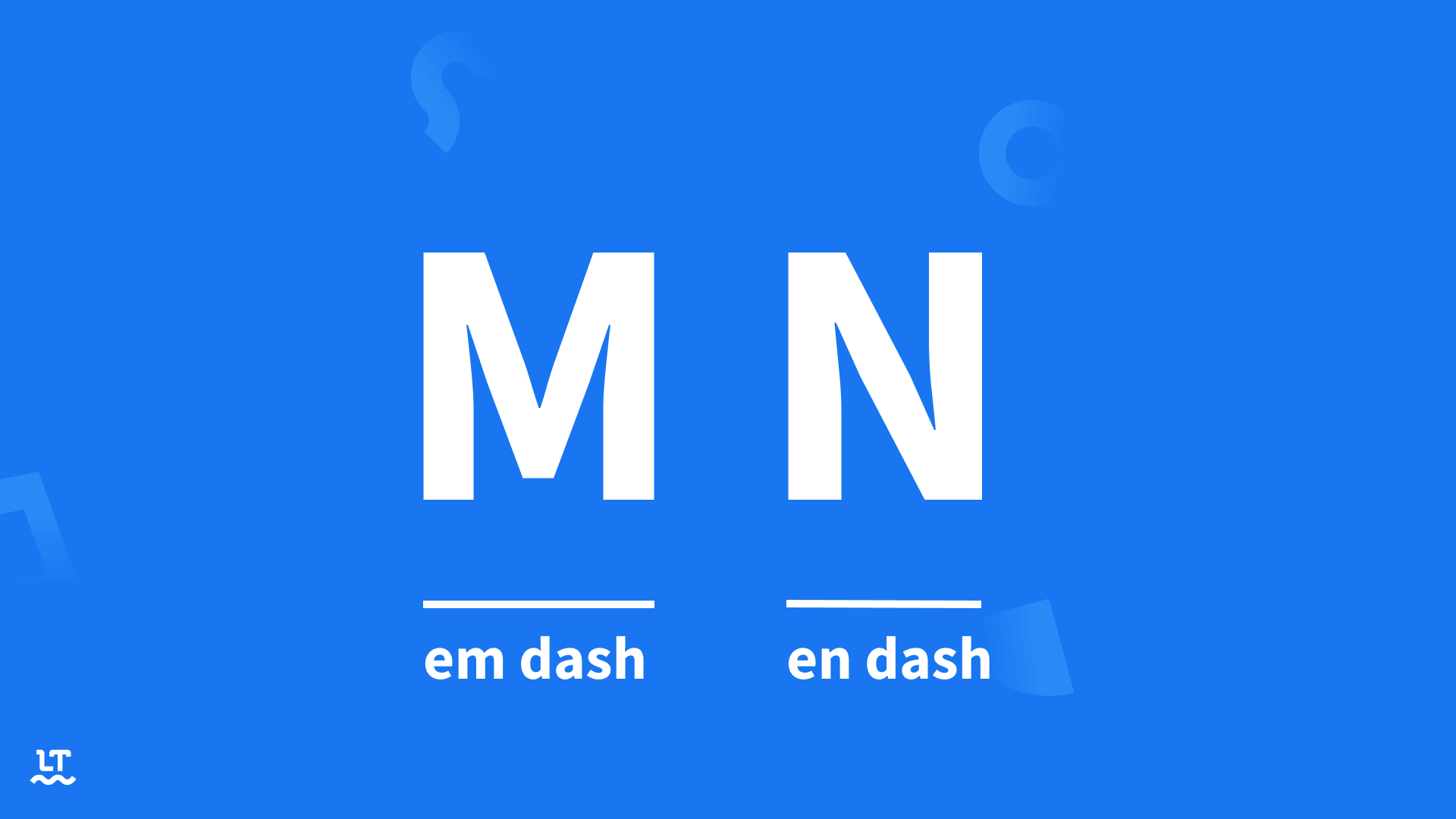Correct Use
- Em dashes emphasize extra information in a sentence. In many cases, they can replace parentheses, colons, and commas: Everyone was happy about the company’s change to paid family leave—from the kids, to the parents, and the grandparents!
- En dashes represent a range between numbers, dates, and times, and establish a relationship between words and ideas: From December 6th–14th, I’ll be on mother–daughter vacation.
Em Dash vs. En Dash
An em dash and en dash look alike. They even have similar-sounding names. But em dashes (—) and en dashes (–) play different roles. Read on to learn how to properly use these popular punctuations, and how they can help organize and enhance your writing.
when you love the em-dash pic.twitter.com/0XO8JfD7sG
— Alexis Gay (@yayalexisgay) November 30, 2021
How to Properly Use an Em Dash
An em dash is the longest of the dashes. Because it is so versatile—it can replace parentheses, commas, and colons—it is a popular punctuation mark among writers.
1) Replacing Parentheses
(Keep in mind that British English refers to parentheses as brackets.)
Em dashes emphasize information more strongly compared to parentheses, but are considered less formal. A pair of em dashes are needed to replace a pair of parentheses placed in between a sentence, and surrounding punctuation should be omitted.
She played several types of instruments (seven, to be exact), but always wanted to learn more.
She played several types of instruments—seven, to be exact—but always wanted to learn more.
Use only one em dash when replacing a pair of parentheses at the end of a sentence.
She played seven types of instruments (piano, guitar, violin, bass, cello, saxophone, and trumpet).
She played seven types of instruments—piano, guitar, violin, bass, cello, saxophone, and trumpet.
2) Replacing Commas
Two em dashes can take the place of a comma and improve the readability and flow of a sentence.
They visited Florence, Rome, and Venice—their favorite cities—during their vacation.
That same sentence with no em dashes may look and read a bit clunky.
They visited Florence, Rome, and Venice, their favorite cities, during their vacation.
3) Replacing Colons
Like colons, em dashes add emphasis to information after a sentence.
His son ate the candy from the bag—all 100 pieces!
Usually, em dashes do not need spacing before or after, but this is a stylistic choice that varies. Newspapers and other outlets that follow AP style add a space.
When using em dashes, remember that they are more emphatic, but less formal. So, as with any other punctuation mark, use them only when appropriate.
How to Properly Use an En Dash
The en dash is shorter than the em dash but longer than the hyphen. Like em dashes, they have multiple uses.
1) Indicating a Span or Range between Numbers, Dates, and Times
An en dash should be read as “to” or “through” when it is being used to represent a span or range between numbers, dates, and times.
We have a meeting every Thursday, 11:00 AM–12:00 PM.
The students were supposed to read pages 19–22 for homework.
The home team lost, 28–14.
Avoid using an en dash if you establish a range using the words “from” or “between.”
2) Establishing a Relationship or Conflict Between Words or Ideas
En dashes also indicate that two words have some sort of connection.
They went to a Real Madrid–Barcelona match.
The clownfish–sea anemone relationship is symbiotic.

How Can I Avoid the Confusion About Dashes and Hyphens?
Typing an em dash or en dash depends on the system and word processor you’re using. Sometimes, clicking the hyphen key twice will automatically produce an em dash. If that doesn’t work, look for the “Insert” button, then click “Special characters,” and look for the necessary dash. This might sound a little tedious, but luckily, LanguageTool will automatically suggest hyphens be switched to an em dash or en dash, depending on the sentence. Additionally, the intelligent editor will also check for spelling and grammar mistakes so that your writing flows smoothly, is error-free, and easy to read.

